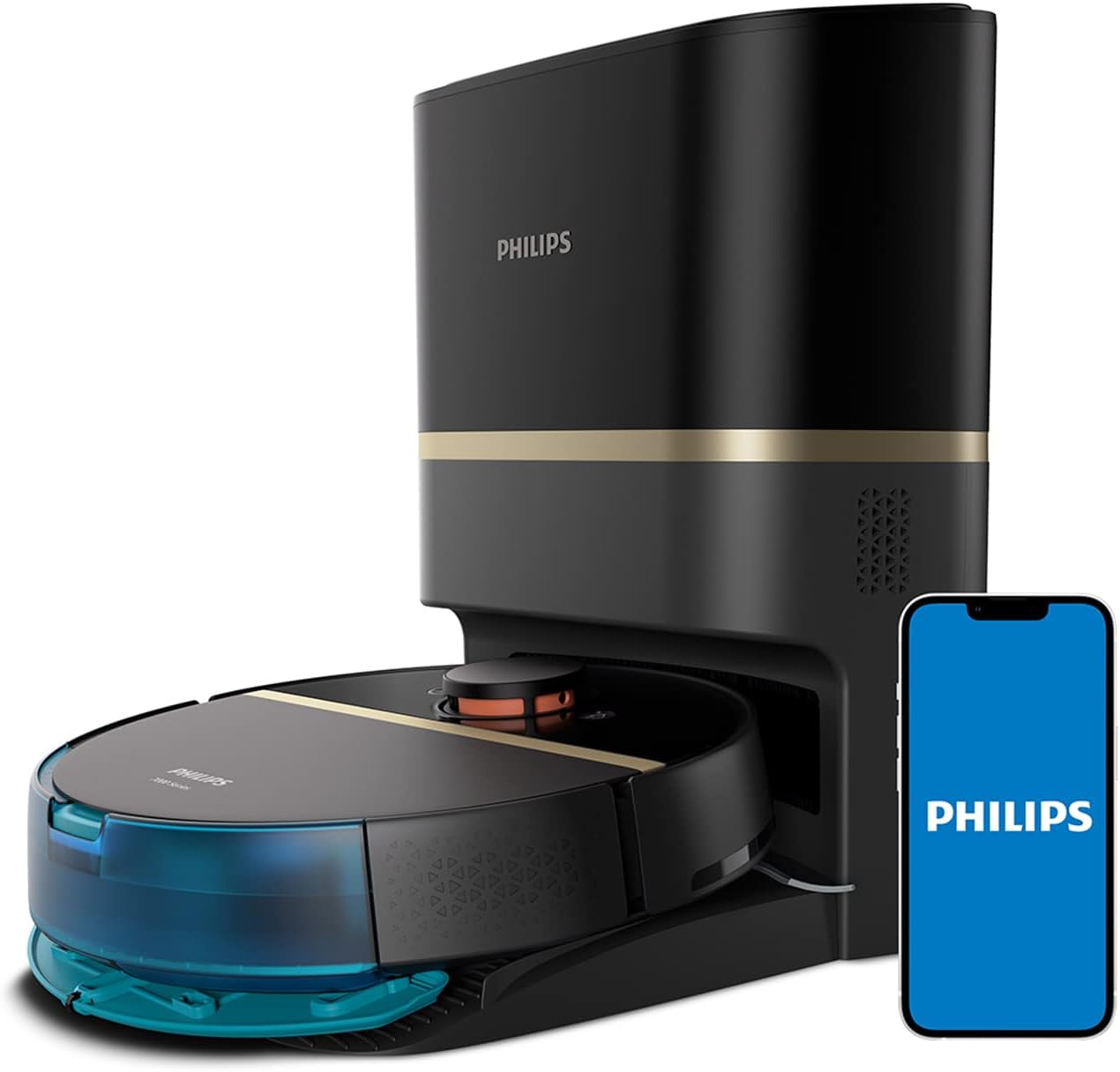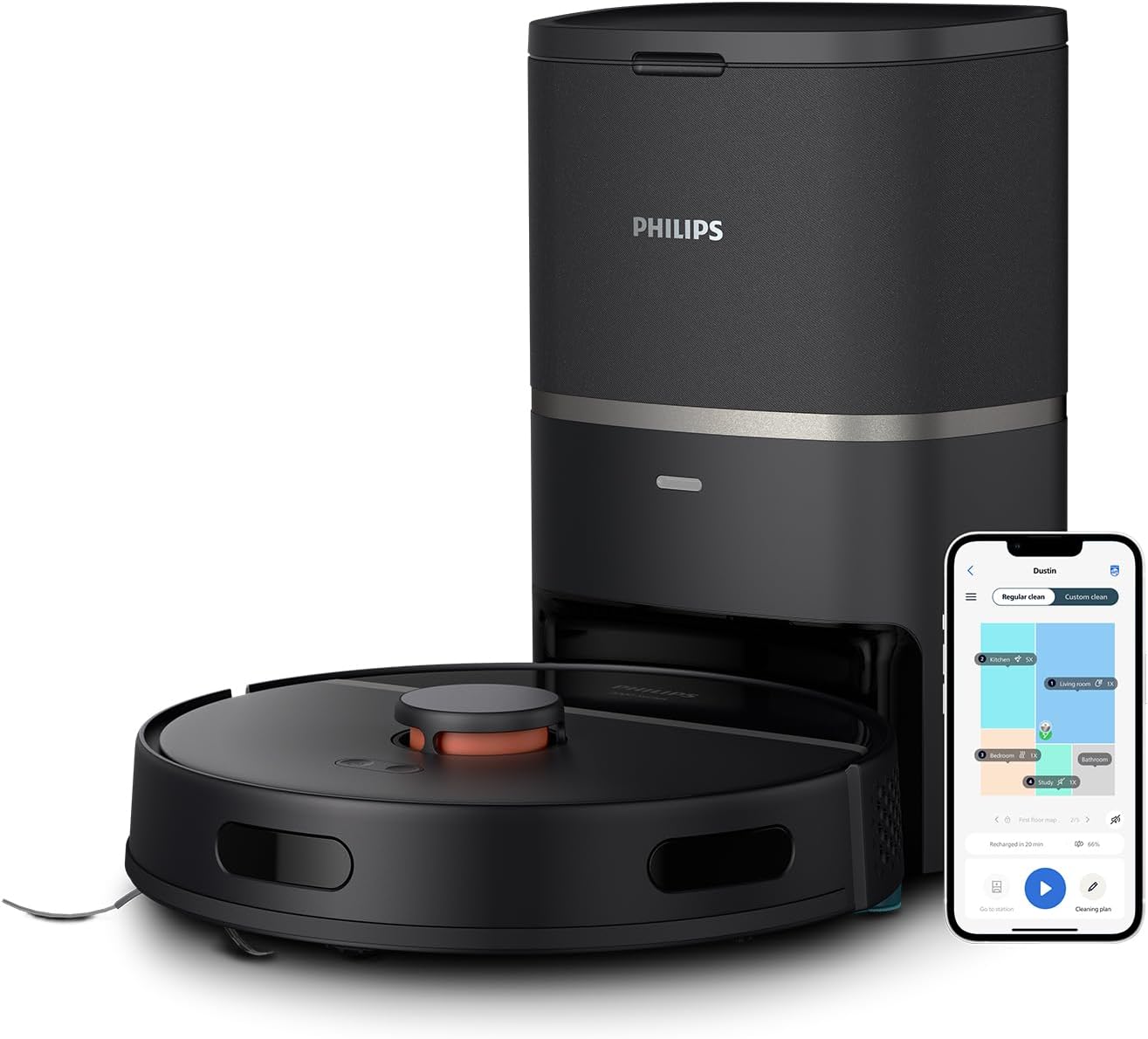|
The most complete! Philips Homerun 7000
Power: 5,000 Pascals |
Good opinions! Philips Homerun 3000
Power: 4,000 Pascals |
Philips is one of those brands that is synonymous with quality and guarantee, whatever the device we are talking about. And, in general, it tends to manufacture mid-high range devices, as is the case with the robot vacuum cleaners that we analyze in this comparison. In it, we tell you what the most important differences and similarities are between the Philips Homerun 7000 and Homerun 3000. Although they belong to the same range, there are important differences that are worth noting.
One of the clearest is the power, which is higher in the Philips Homerun 7000. In fact, the presence of a more powerful motor is one of the reasons why this robot weighs more, although in both cases it allows you to choose between 4 different power levels. This leads us to another difference, which is the maximum autonomy, although this is less pronounced than the power. What does vary is the time it takes each robot to fully recharge, going from 6.5 hours in the Homerun 3000 to 5 hours in the Homerun 7000.
Both robot vacuum cleaners can vacuum and mop at the same time, although the mopping is more intense in the Philips Homerun 7000 because it uses vibration. Likewise, they have a self-emptying station with the same capacity, about 3 liters. And, when it comes to navigation, it should be noted that in both robots it is laser, but the Homerun 7000 has more detection sensors than the Homerun 3000.
To see all the differences in more detail, don’t miss our review!
Philips Homerun 7000 vs Philips Homerun 3000 – Comparative table
In the following table, we show you the most important characteristics of the two Philips robot vacuum cleaners, so you can check which one best meets your needs:
Philips Homerun 7000
|
Philips Homerun 3000
|
|
| Robot dimensions | 35x35x9.7cm | 34.1 x 34.1 x 9.6cm |
| Base dimensions | 14″ x 16″ x 19″ | 26.2 x 19.5 x 40.5cm |
| Robot weight | 4kg | 3.8kg |
| Maximum power | 5000 Pascals | 4000 Pascals |
| Power levels | 4 | 4 |
| Battery capacity | 5200mAh | 4800mAh |
| Maximum autonomy | 180 minutes | 200 minutes |
| Recharge and resume | Yes | Yes |
| Loading time | 5 hours | 6.5 hours |
| Scrub | Yes, vibration mop | Yes, passive flat mop |
| Maximum base capacity | 3 liters | 3 liters |
| Internal tank capacity | 260 ml (solids) / 240 ml (water) | 350 ml (solids) / 300 ml (water) |
| Navigation | 360º LDS Laser + 3D TOF Sensor | LDS 360º laser |
| Interactive maps | 5 | 5 |
| Intelligent object recognition | Yes | No |
| Smart room management | Yes | Yes |
| Anti-fall sensors | 6 | 3 |
| Liftable mop | No | No |
| Main brush | Multifunction rubber and bristles | Multifunction rubber and bristles |
| Filter type | EPA 11 washable | EPA 11 washable |
| Voice control | Yes | Yes |
| Mobile app | Yes | Yes |
Few differences in design
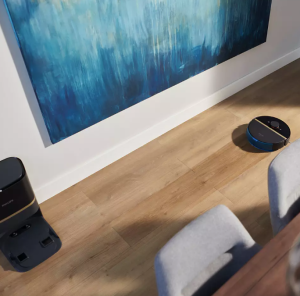
It is clear that the two robot vacuum cleaners belong to the same range, because their design is practically the same in both cases. The only thing that changes is that the self-emptying station of the Philips Homerun 7000 is wider than that of the Homerun 3000, although both have a bag of the same capacity, 3 liters. However, the model 7000 station has DualWave technology, which allows automatic emptying in less than 30 seconds because it sucks while pushing, somewhat faster than in the Homerun 3000.
Power: improvement on the most recent model
Suction power is one of the aspects we first look at when considering which robot vacuum cleaner to buy. In this case, the maximum power is higher in the Philips Homerun 7000, which reaches 5000 Pascals, compared to the 4000 Pascals achieved by the Homerun 3000. Even so, both robots allow you to choose between 4 power levels, but it is the 7000 model that can achieve a more intense suction.
Battery: duration and charging time
Now, we compare the battery performance of both robot vacuum cleaners, and we have to say that the differences are smaller in this case. The Philips Homerun 7000 has a 5200 mAh capacity battery, somewhat higher than the 4800 mAh of the Homerun 3000. However, it is this model that achieves a greater autonomy, up to 200 minutes compared to the 180 minutes that the Homerun 7000 can operate. Of course, the difference is not much, and you already know that it depends on the power level you select at all times (the maximum autonomy is in low power mode).
Both have the automatic recharge and resumption of cleaning function, although it does not take the same time to recover the entire battery. The Philips Homerun 7000 charges in about 5 hours, while the Philips Homerun 3000 takes approximately 6.5 hours.
They scrub and vacuum, although not with the same intensity
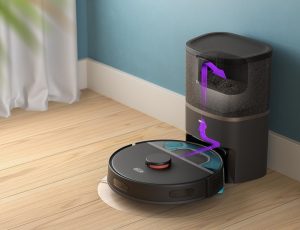
Another of the similarities that the two robot vacuum cleaners share is that they can mop at the same time as they vacuum, although the mopping is not equally intense. The Philips Homerun 3000 has a passive flat mop mopping, while the Homerun 7000 has a vibrating mop mop. This means that the efficiency and intensity with which the mop removes stains is higher in the Homerun 7000, achieving better results. On the other hand, it should be noted that the water tank (and also the solids tank) has more capacity in the Homerun 3000, although none of them have a lifting mop.
Smart navigation, but with different precision
We come to another of the aspects that arouse the most curiosity and interest among users, the type of navigation. The first thing you should know, in this sense, is that the two Philips robot vacuum cleaners have an intelligent navigation system, because they both use laser technology to move. This allows them to create a 360º map of the space in your home in which they can later carry out personalized management by room. Both can store up to 5 interactive maps, although the Homerun 7000 has more additional options, such as choosing a smooth or no elevation zone.
On the other hand, there is another difference related to the set of sensors. Neither robot has an artificial intelligence system that allows them to intelligently recognize obstacles, but the Homerun 7000 has an advantage over the Homerun 3000 in this regard. Specifically, it has 6 anti-fall detection sensors, compared to the 3 sensors that the model 3000 has. And not only that, but it also combines the action of the laser with a 3D TOF sensor and 8 TOF sensors. This allows it to detect small obstacles more accurately than the Homerun 3000.
The main brush is the same
One of the factors where we do not find changes between the two Philips robot vacuum cleaners is the type of main brush they have. In both models we see a multi-surface brush made up of a combination of rubber and bristles, so that they can absorb solid waste of different sizes, as well as hair, threads or similar debris.
App and voice control on both robots
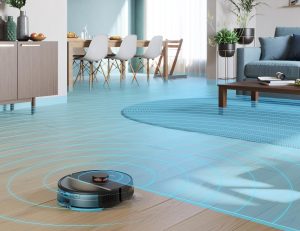
Finally, we highlight that both the Philips Homerun 7000 and 3000 can be synchronized with the brand’s own HomeRun app. This connection is key to controlling the robot remotely, or to schedule cleaning so that when you get home, you find it clean.
Through the app you can also see the maps of the different floors, to reorganize the cleaning order, rename the rooms or delimit areas that you do not want them to pass through. Likewise, the two robot vacuum cleaners integrate the Alexa voice assistant, so it is possible to connect it with other assistants to issue commands out loud.
Which Philips robot vacuum cleaner is worth the most?
Now that you know what the most important differences are between the two Philips robot vacuum cleaners, it’s time to choose which one to choose. To do this, it is essential to know what price each one has, and whether the price difference is justified or not. As expected, the Philips Homerun 7000 has a higher price than the Homerun 3000. Not only because it achieves greater suction power, but because it has a more precise navigation system that allows it to identify a greater variety of small objects. In addition, it takes less time to charge, while the advantage in terms of maximum autonomy that the Homerun 3000 has is not significant, because it is a maximum difference of about 20 minutes.
On the other hand, the Philips Homerun 7000 improves scrubbing compared to the Homerun 3000, going from a passive scrubbing to a more intense and exhaustive one. To be fair, none of them have a scrubbing feature capable of making us forget about manually scrubbing, but the result is more professional with the Philips Homerun 7000.
Therefore, if you can face that economic difference, the performance of the Philips Homerun 7000 is higher than that of the Homerun 3000. To give you an idea, the Philips Homerun 7000 is a high-end robot vacuum cleaner, while at the same time We would classify Philips Homerun 3000 as upper mid-range. They are not the cheapest robot vacuum cleaners on the market, but they are not the most expensive either, and they have a reputation and reliability that many other brands lack.

